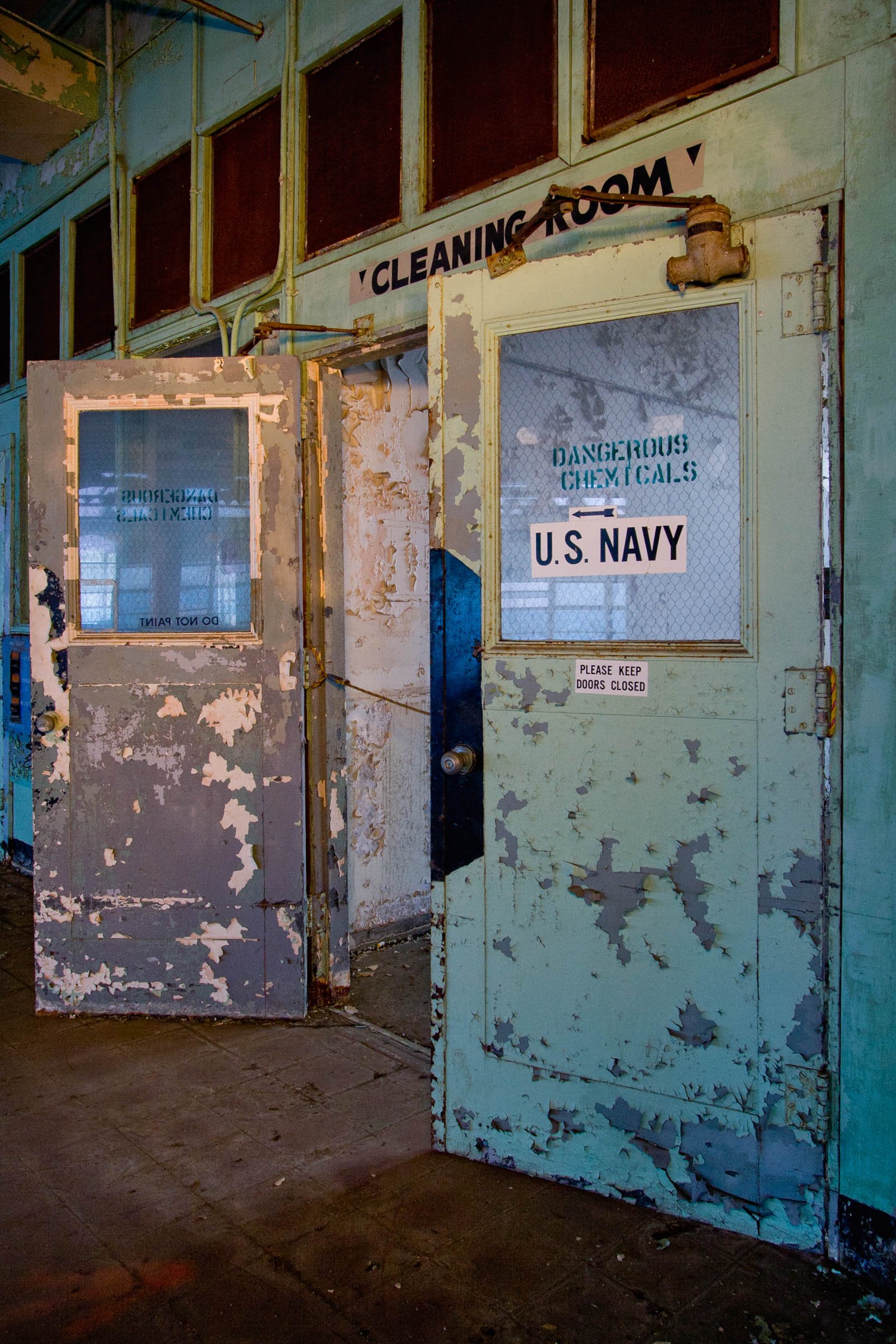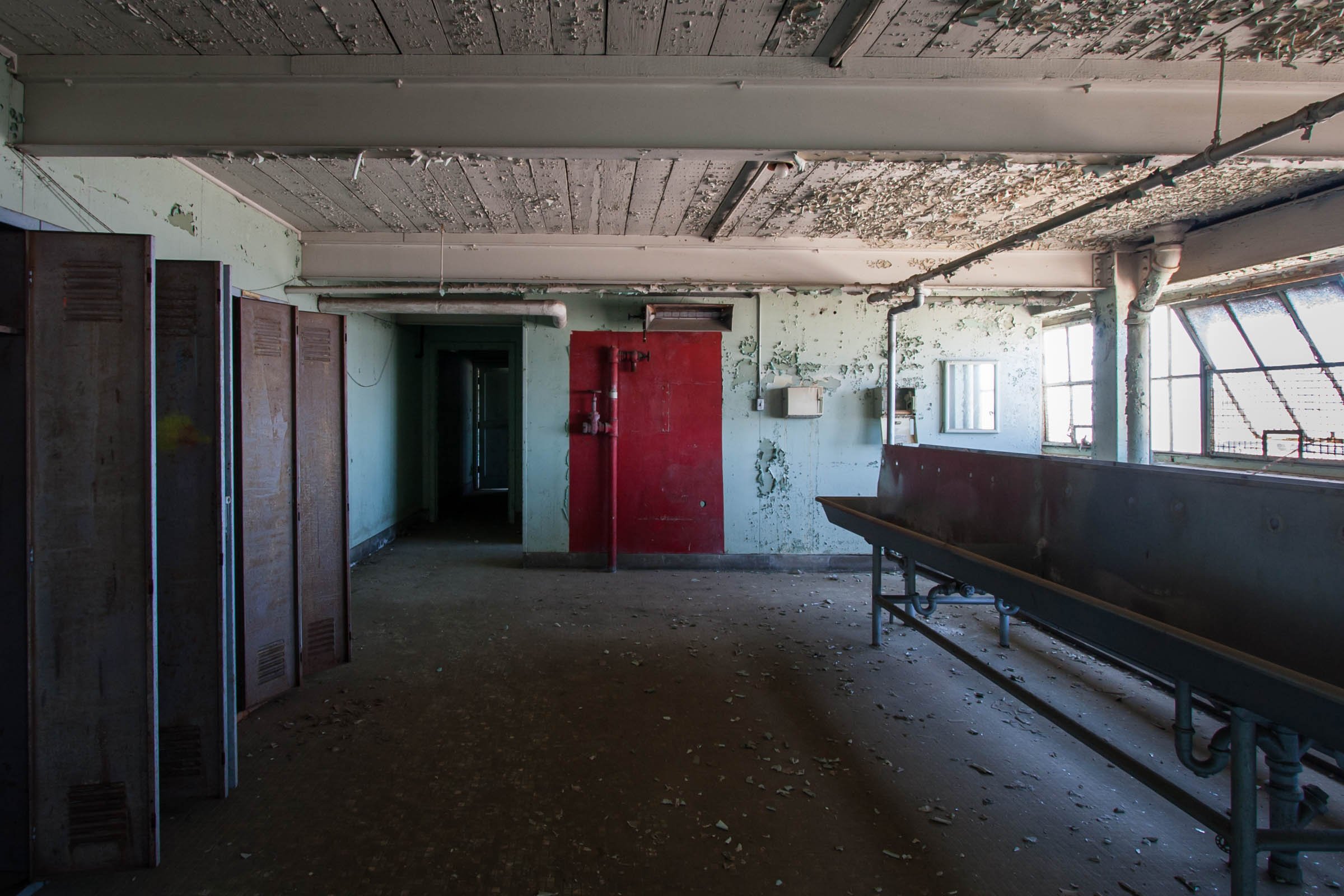Hunter’s Point Naval Shipyard, California
In 1867 the California Drydock company purchased land in the Southeastern corner of the city of San Francisco and the first drydock on the West Coast was established the following year. Success came quick for the facility causing businessmen to be attracted to the area, which meant they were witness to the frequent ship repairs and builds being pushed out by California Drydock.
Years later in 1908, Bethlehem Steel purchased the land and shortly thereafter, their dry docks and team facilitated repairs for the Great White Fleet, a force of sixteen battleships, during their world tour. The facility’s ability to execute quick repairs caught the eye of the Navy and in 1939, Congress authorized the purchase of the property from Bethlehem Steel, but the Navy continued to lease some of the land back to Bethlehem Steel so long as there was not a national emergency. In 1941, the Bethlehem Steel lease was terminated and the property was renamed the Hunter’s Point Naval Shipyard.
The facility operated as a Naval Shipyard from 1941 to 1974 and the focus was on expansion. A 1,100 foot dry dock and a gantry crane, the largest to exist at the time, were constructed. Thousands of workers, mostly African American, were recruited and encouraged to move to the area with their families. By 1945, over 15,000 people were employed by the Shipyard, most living on the property that contained medical facilities, a cafeteria, a commissary store, recreational facilities and a bus terminal.
In 1946, the Navy vessels contaminated with radioactive fallout were taken to Hunter’s Point. The new lab on the property, the Naval Radiological Defense Laboratory, proposed solutions for the radioactive clean up that included sand blasting the ships in the dry dock and packing almost 50,000 steel drums with nuclear waste and disposing of them in the ocean near the Farrallon Islands.
In October 1948, the facility held a “Navy Day Celebration” with a parade that included a dedication for the six-story Building 253, the Ordnance & Optical Shop, known as “The Glass House”. The building cost was $2,500,000 and contained nearly two acres of glass along the exterior, which included a periscope tower that extended from the roof. It was also home to the largest industrial escalator, spanning from the first floor to the third floor.
After active operations were ceased by the Navy in 1974, the property was leased to a commercial ship repair company.
In 1989, Hunter’s Point Naval Shipyard became a Superfund site identifying the Navy as responsible for the clean-up. The Shipyard was divided into parcels and once environmental clean-up had been approved, the City of San Francisco had the option to accept the parcel for development.
Since then, multiple redevelopment projects on the land have been completed, however there have been multiple lawsuits specific to the poor clean-up of the site in the last few years.
Buildings pictured: Building 231 (Machine Shop), Building 253 (Optics & Ordnance) & Building 813 (Supply Building).


















































